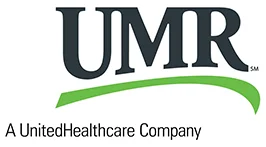State Managed Early Intervention Program vs. Pediatric Outpatient Therapy Clinics: What’s the Difference?


As private practice providers, we at CTC feel strongly about the benefits that clinic-based therapy can deliver to our clients and our families. But we more strongly believe in making sure that our families are receiving the care that is most aligned with their child’s and family’s needs. In this month’s newsletter, we provide some information about the differences between clinic-based and home-based therapies; specifically, some of the variations between private practice and Illinois’ Early Intervention program. It can be an overwhelming and confusing process to begin therapy and understand all the “ins and outs” of coordination, payments, treatment models, etc., so here we go!
The Pros and Cons of State Managed Early Intervention Programs and Pediatric Outpatient Therapy Clinics


Ask many people what they think is the main difference between therapy provided by the Illinois Early Intervention (EI) program and therapy provided in a private practice setting, and you will often hear: Early Intervention is free; private therapy is not. This is actually a misconception, or at the very least, a half-truth. While there are a number of services provided via EI that are free, such as evaluations, service coordination, and translators (if needed), therapy sessions are not free of charge.
Family Participation Fee
The family participation fee is a payment that is set each year by the EI program and is based on a family’s income, size, and whether they have excessive out-of-pocket medical/disaster expenses.
Private Insurance
Families whose children are enrolled under private insurance plans are required to use their child’s benefits to assist in meeting the costs of covered Early Intervention services and devices unless an insurance exemption has been approved. Private insurance can help reduce the amount the EI system pays for your child, potentially reducing your family participation fee.
In short, the EI program is the “payer of last resort.” Which means all other available funds must be used first.
Potential benefits of EI/home therapy:
- Comfortable, familiar environment for child
- Involvement of siblings/parent if motivating for child
- Convenience for those without transportation
- Easy to demonstrate techniques within the home setting so parents learn how to carry over treatment strategies using items in their own home
- May be more cost-effective
Potential drawbacks of EI/home therapy:
- Coordination of Early Intervention services may require parents to wait for an extended period until therapists are contacted and assigned to the case
- Therapy may be undervalued – parents and child may take sessions less seriously than they would in a more structured setting
- Less access to materials (i.e., weighted vests, suspended equipment, feeding materials)
- Sometimes children don’t qualify for EI services because they are not determined to have a developmental delay of 30% in one or more areas of development (i.e., cognitive, physical, communication, social or emotional, or adaptive)
- Distractions are more likely to occur (i.e., presence of siblings or pets, family members doing daily tasks)– this reduces efficiency and may increase length of therapy
Potential benefits of private practice therapy:
- Parent involvement occurs at each session
- Access to materials that may not be easily transferable to the home
- Provides another setting that allows child the opportunity to obtain and maintain skills
- Focused, one-on-one intervention in a structured setting
- Therapeutic activities can be maintained in the home given suggestions/assignments from therapist
- Increased flexibility to meet the specific needs of the child (i.e., in terms of frequency and duration of therapy)
- Clinic therapy can be provided in addition to home/EI services and/or school-based services, or stand alone, depending on the individual needs of the child and the family situation
Potential drawbacks of private practice therapy:
- May be less convenient for parents (i.e., travel time, location)
- Many parents may want therapy that includes more social interaction with other children (i.e., classmates, siblings)
- Time: More time may be required for travel and parent involvement
- Money: Clinic therapy generally tends to operate from a medical model with medical insurance billed. If child does not have a qualifying medical diagnosis, parents may have to pay privately for added services
Other notable differences between EI and private practice are outlined below:
Age
Only children under the age of 3 can receive EI services, should they qualify. Once a child turns 3 years old, they “age out” of the EI program and require a transition plan, should further services be deemed warranted.
Criteria
While children evaluated by EI must exhibit a delay of 30% or more in one or more of the developmental domains, children who are evaluated in a private practice are typically determined to require therapy based on a variety of factors, both objective and subjective. Children who do not qualify for EI often qualify for private practice therapy, should it be determined that any limitations in their development have a negative impact on their daily functioning.
In short, while both EI and private practice therapies should focus on the individual needs of the child and provide therapy that is catered to those needs, there are differences between the two modalities that caregivers may not be aware of. Parents should be informed of all options when it comes to the services that they choose for their child, in order to make a decision that serves in the best interest of their child and family.





